3D Printing and Upcycling: A Brief Case Study
On today’s blog, we have Patrick Benfield from Magellan International School discussing the very exciting topic of 3D printing and upcycling! Patrick recently participated in our Project Upcycle resource and has kindly offered to share his journey with the community. Over to Patrick…
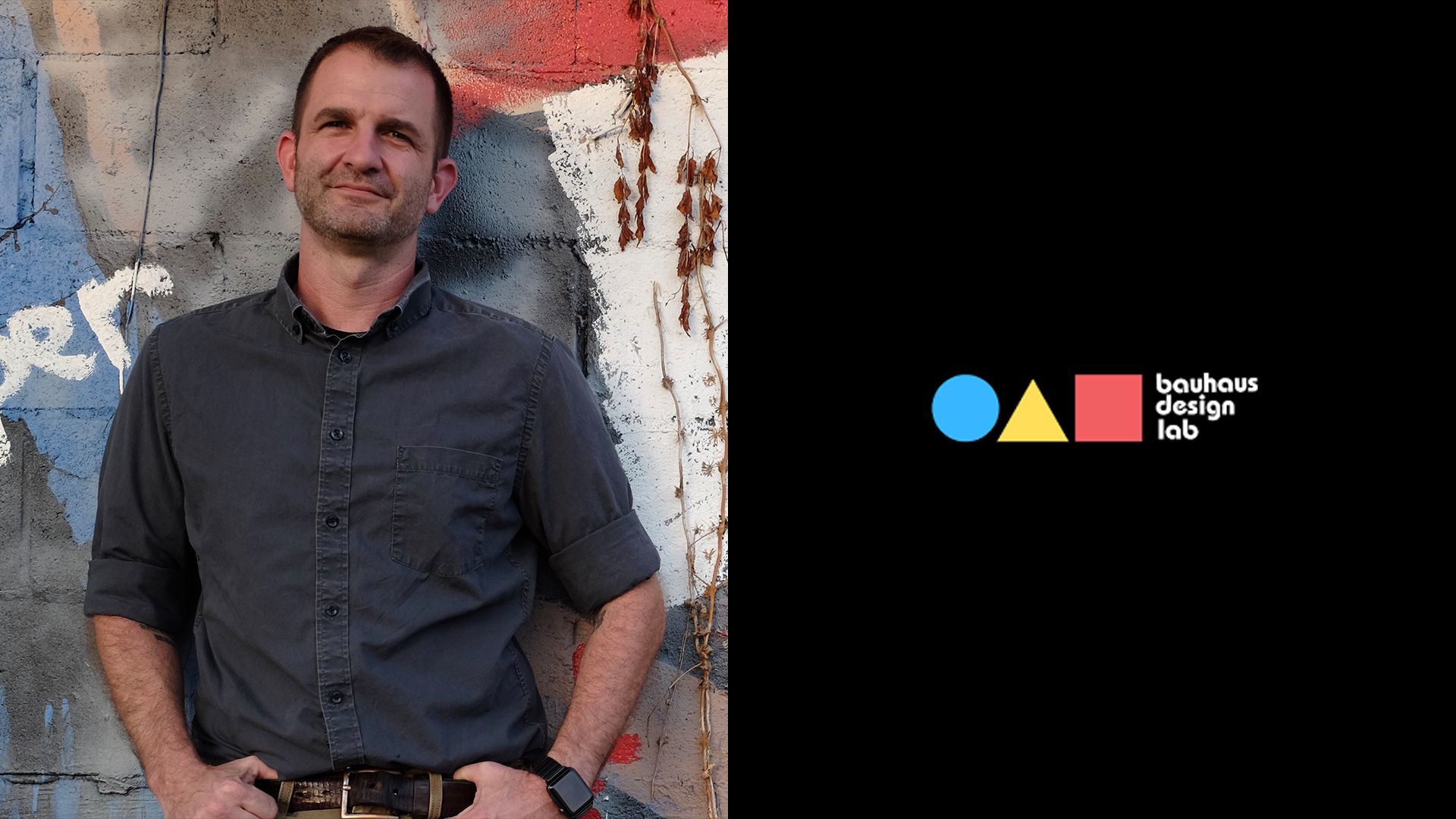
20th May 2024 • Case Studies
“The first big idea is learning by doing. We all learn better when learning is part of doing something we find really interesting. We learn best of all when we use what we learn to make something we really want.”
Seymour Papert
—
Hello and thank you for your interest in 3D design and printing. As the founding director of the Magellan International School’s innovation program and its makerspaces, PrintLab has been an essential part of exploring 3D design and printing with students.
This blog will take a look at part one of our journey with Project Upcycle, where students combine product design skills with sustainability and how we adapted it to meet our own programming goals. More specifically, it will focus on how we tailored it to be an even better fit for our students.
Purposeful Action
Project Upcycle, just one of several available from PrintLab’s collection, provides students with an opportunity to hone their product design skills by transforming what would be normally considered a waste material, like plastic bottles, and give them a new purpose by incorporating 3D printing.
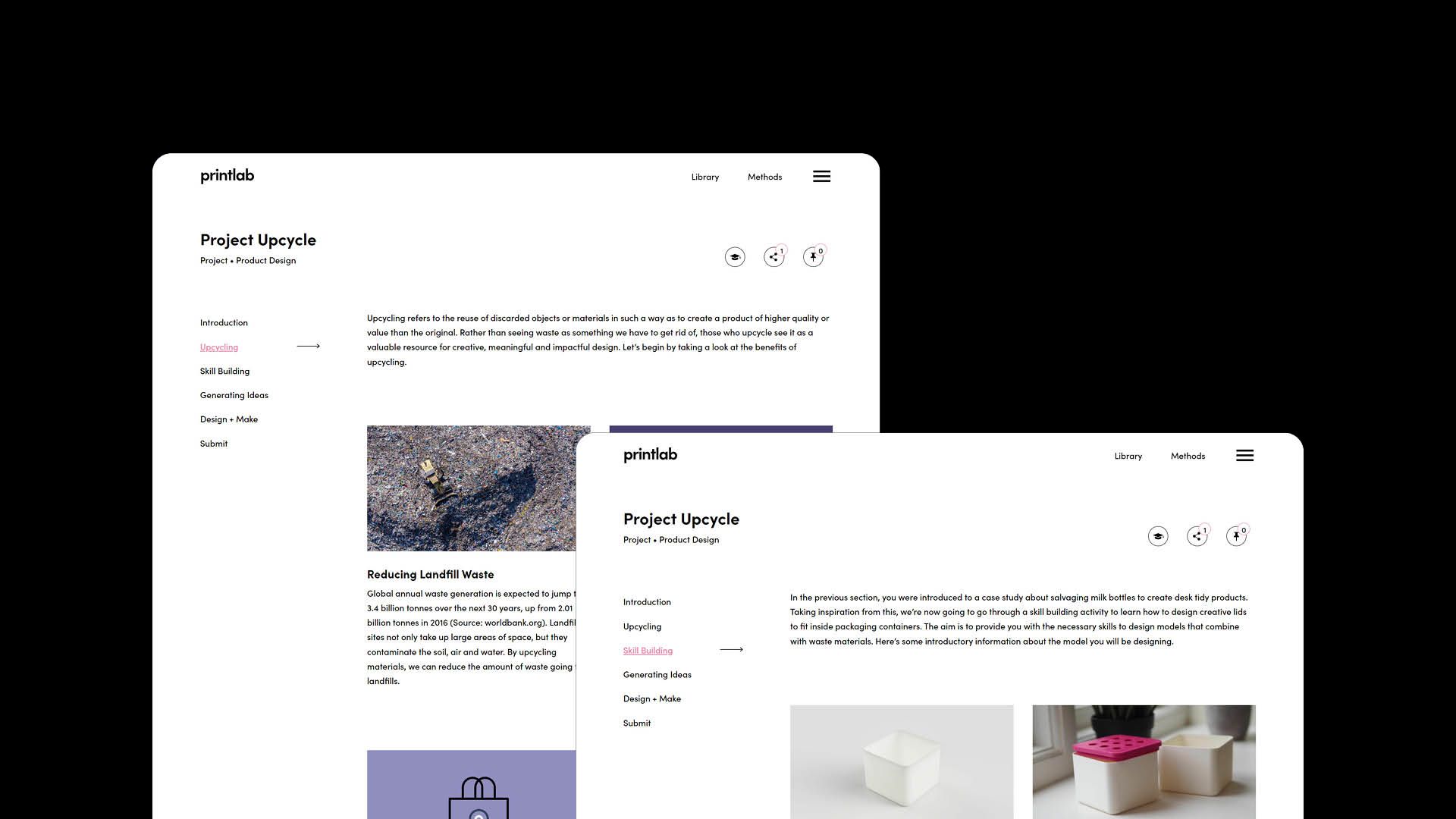
Carlos Bernal, the Design teacher, and I initially chose this project because Magellan’s culture of innovation has helped students to foster a maker mindset and a passion for purposeful action that have a global impact.
With this in mind, we added another layer (no pun intended) to this project, much to the delight of the students. Rather than limit their designs to our school community, they would be creating free, open-source models that would be published online for others to print. There were literal squeals of excitement about this addition.
From Bauhaus to Their House
Like most of the learning experiences in Design class, this project began in the Bauhaus Design Lab, the middle school design studio and fab lab, with a closer look at materials. In this case, students considered where various common building materials come from, how they are processed, and where they go when they’re thrown away. This was another element that we added to complement PrintLab’s “Methods,” an archive of practices for every step of the design process.
Similarly, during the previous school year, these students created designs for another PrintLab project, Rethinking Plastics. We decided to forgo the Skill Building portion of Project Upcycle and focus more on the ideation phase.
For this step, we combined Imagine If… from Agency by Design (AbD) with the scale drawing practice from PrintLab. At home, students took a closer look at items that might be thrown away or recycled, and considered how these might be transformed into something more effective, practical, and/or beautiful.
Back at school, students shared their observations and potential objects for repurposing, from broken acoustic guitars and festive gift boxes to eyeglass cases and plastic bottles. Once they had a chance to share their discoveries, they created several thumbnail sketches of their ideas into their tinkering journals.
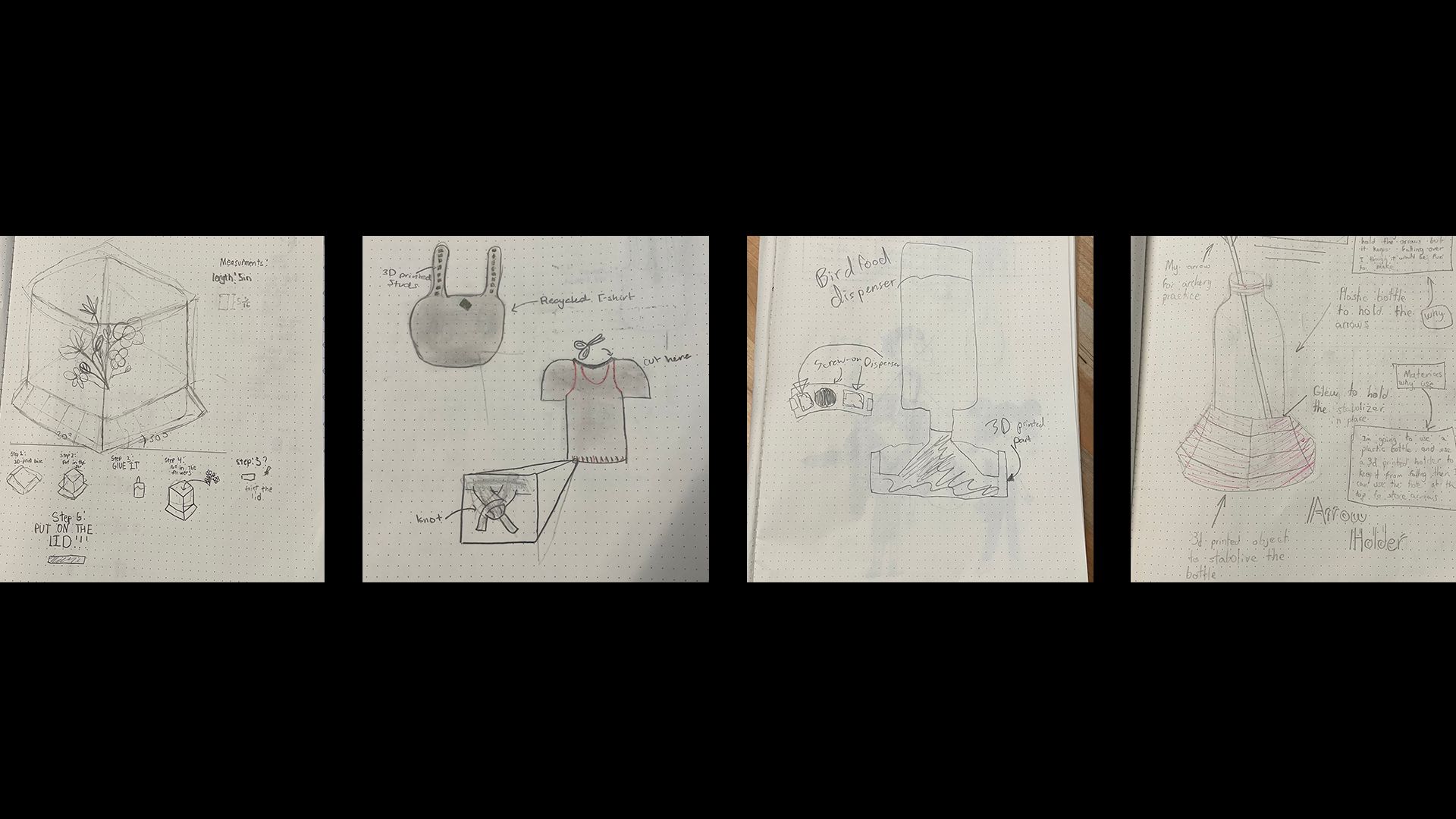
After narrowing down their ideas, Mr. Bernal led the class through a series of lessons on perspective drawing so they could refine their ideas before designing digitally.
Form Follows Function
Over the next several sessions, students worked in Tinkercad to create 3D models based on their sketches, taking careful measurements with their calipers and printing small scale prototypes so they could quickly iterate on their designs. And what they created was delightful and reflected the interests of each student. For instance, some designed more decorative items like topiary displays while others focused on more functional items, like storage containers.
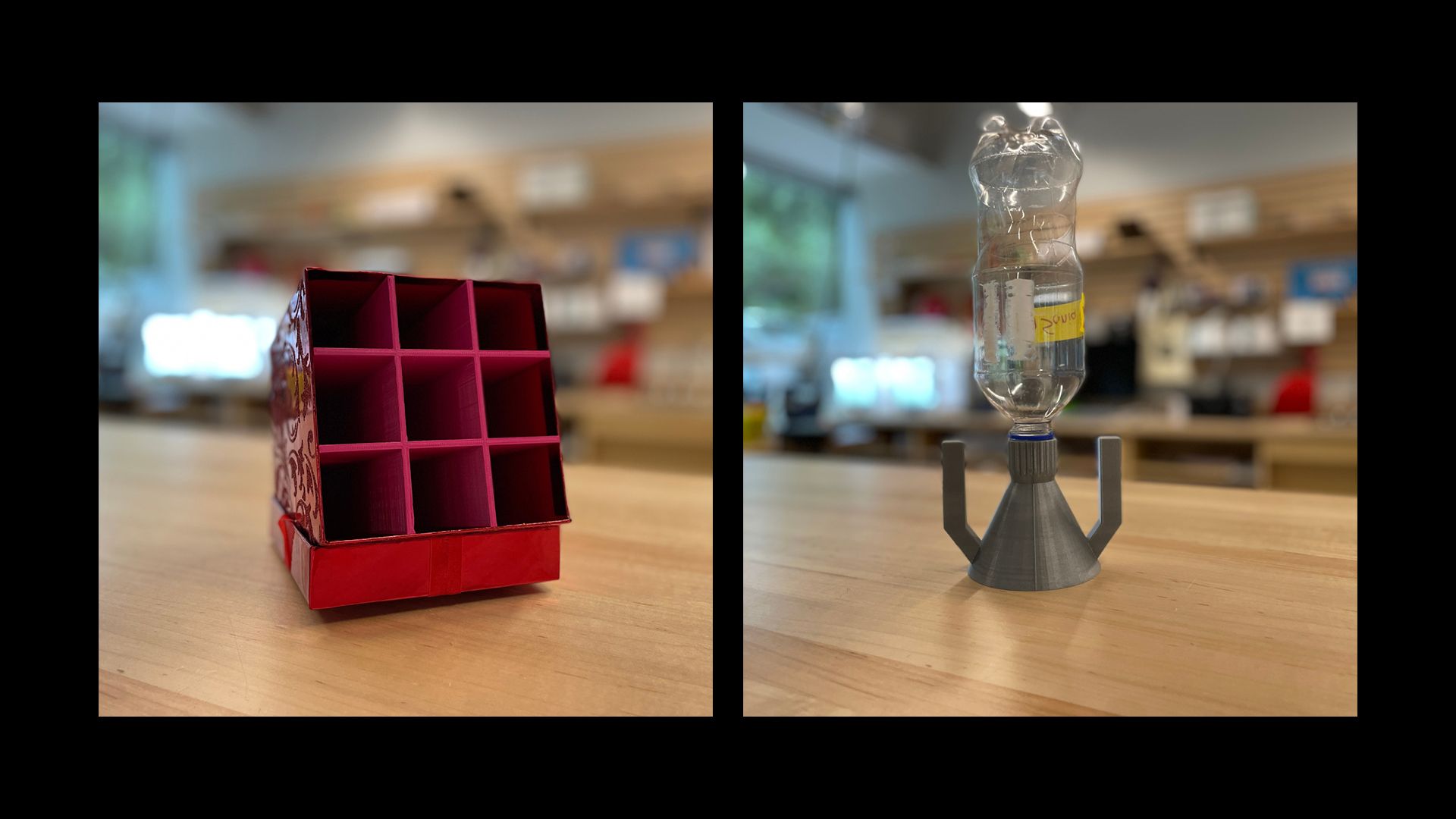
It wasn’t all smooth sailing, however. Some students realized that while their models were printable, they would use significantly more plastic than the object that they were upcycling. Others, meanwhile, had created designs that required very specific materials that wouldn’t necessarily be widely available, so they pivoted to another idea since their goal was to have as much impact as possible.
Even at this stage of the project, students made discoveries which helped to motivate them in the face of these challenges and setbacks during the fabrication process. One of our students, for example, was upcycling old t-shirts by transforming them into tote bags with 3D embellishments. In one of our regular feedback sessions, a classmate mentioned the problems posed by fast fashion, which help to reinforce the sense of purpose around this project.
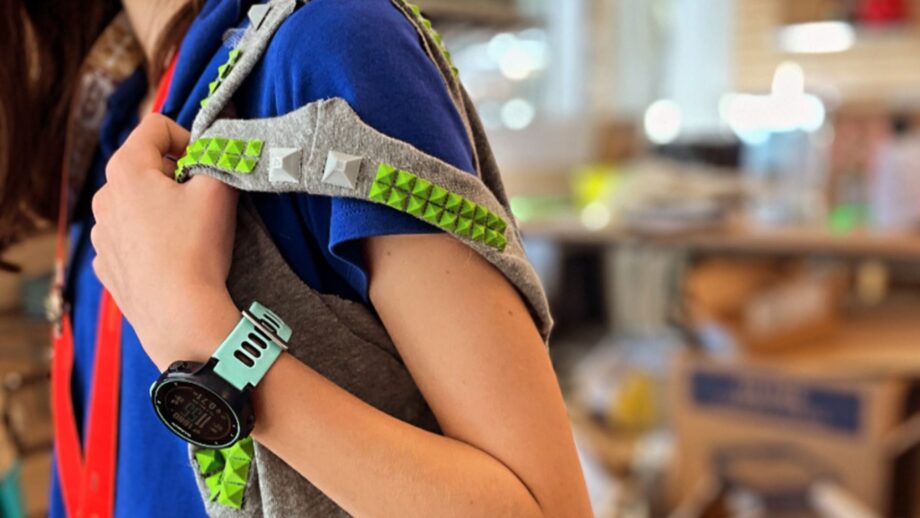
Reflecting on the Experience
One thing worth noting is that we decided to split the project into two phases: design and prototyping at the beginning of the school year, followed by testing and iteration near the end of the school year. The main reason for this is that at the beginning of the fall semester, we were still in the process of moving into a new campus (our “Forever Home”) and we were also still building out the Bauhaus Design Lab.
In spite of these challenges, part one of this Design unit was successful in many areas. On one practical side, the sheer flexibility of PrintLab afforded Mr. Bernal and I the ability to adapt Project Upcycle to meet our own programming goals, scheduling constraints, and move related logistics.
From the student perspective, Project Upcycle was an opportunity to engage in meaningful making by combining their own passions and interests with a platform that offered many different entrypoint into digital design and fabrication.
How Soon is Now?
As of this writing, we are now in the midst of part two of this project, and as luck would have it, two more resources were made available that we’re going to incorporate now and in the future.
First is PrintLab’s Mechanisms Library, which provides students with options for adding movement and different types of connections to their designs, and we think students will find useful for their Project Upcycle refinements.
Mr. Bernal and I are equally excited about the second resource, which was recently published by fellow Printlab Pioneer, Ed Charlwood. His new book, Mastering Tinkercad, is available in both student and instructor editions, in both print and PDF. We wish we would have had this at the beginning of the school year, but we’re looking forward to including this in our own Tinkercad unit next year.
In the meantime, as students complete their Project Upcycle designs, they will be uploading them to our new page so that anyone with access to a 3D printer can create their own sustainable solution for transforming waste into something wonderful.
Please let us know if you print one of our students’ models – they would love to know that they are truly making an impact!
—
Huge thank you to Patrick and his students for sharing their recent experience and amazing work with us today! If you’d like to check out Project Upcycle yourself, head over to our free trial here :).